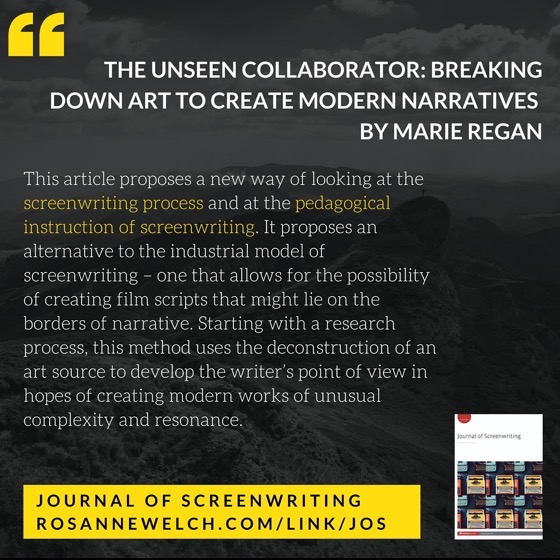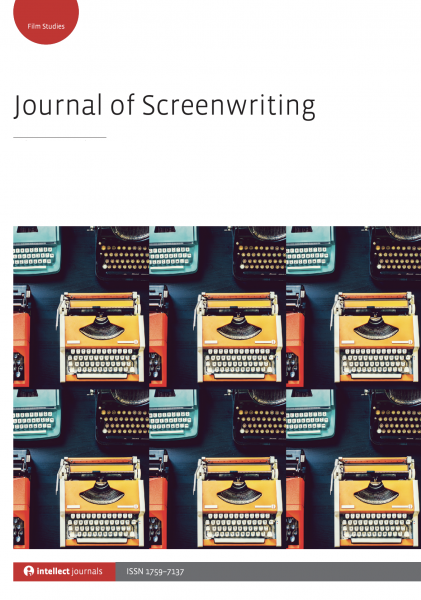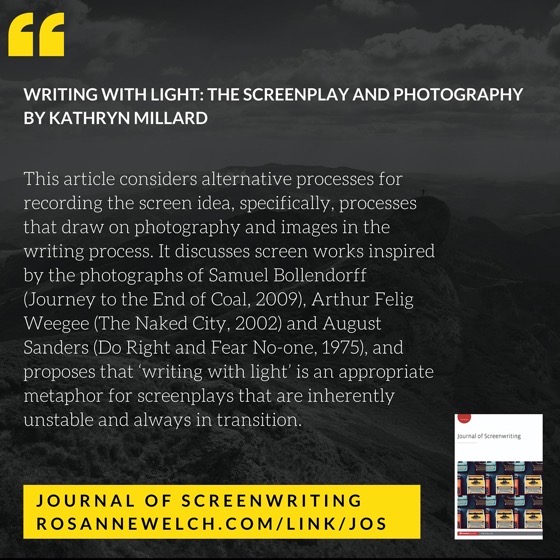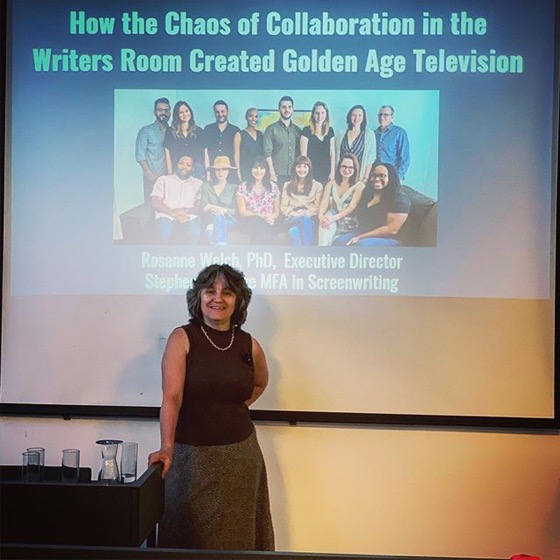Highlighting the articles in the past editions of the Journal of Screenwriting, of which I am the Book Reviews Editor. Hopefully these abstracts will entice you to did a little deeper into the history and future of screenwriting. — Rosanne
The unseen collaborator: Breaking down art to create modern narratives by Marie Regan
This article proposes a new way of looking at the screenwriting process and at the pedagogical instruction of screenwriting. It proposes an alternative to the industrial model of screenwriting – one that allows for the possibility of creating film scripts that might lie on the borders of narrative. Starting with a research process, this method uses the deconstruction of an art source to develop the writer’s point of view in hopes of creating modern works of unusual complexity and resonance. Citing examples from Bach, Munch and Melville, and films by Francois Girard, Peter Watkins and Claire Denis, the article suggests a method for screenwriters using the limit of an original artwork’s form to generate a unique narrative structure, and building on that structure by bringing the writer’s own contemporary perspective to the content concerns. It contends that this process works to renew the writer’s connection to form and, by working with an artwork the writer admires, pushes the writer into deeper engagement with her own point of view.


The Journal of Screenwriting is an international double-blind peer-reviewed journal that is published three times a year. The journal highlights current academic and professional thinking about the screenplay and intends to promote, stimulate and bring together current research and contemporary debates around the screenplay whilst encouraging groundbreaking research in an international arena. The journal is discursive, critical, rigorous and engages with issues in a dynamic and developing field, linking academic theory to screenwriting practice.
Get your copy and subscription to the Journal of Screenwriting Today!
* A portion of each sale from Amazon.com directly supports our blogs
** Many of these books may be available from your local library. Check it out!



![13 Characters and Susannah Grant from There And Back Again: Writing and Developing for American TV [Video] (56 seconds)](https://rosannewelch.com/wp-content/uploads/2021/03/rmw-oxford-brookes-13.jpg)


![02 Words Matter. Writers Matter. Women Writers Matter from How The Chaos Of Collaboration in the Writers Room Created Golden Age Television [Video]](https://rosannewelch.com/wp-content/uploads/2021/03/srn-porto-02.jpg)





![Dr. Rosanne Welch Speaks at the 2021 Society for Cinema and Media Studies Conference – Thursday, March 18, 2021 [Event]](https://rosannewelch.com/wp-content/uploads/2021/02/conference_pathform-website-.jpg)
![12 Describing Your Characters from There And Back Again: Writing and Developing for American TV [Video] (1 minute)](https://rosannewelch.com/wp-content/uploads/2021/02/rmw-oxford-brookes-12.png)
